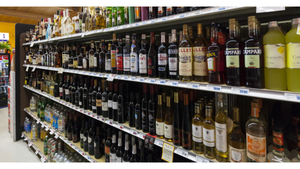BRANDED DEPARTMENTS SPUR CONSUMERS TO STOP & SHOP
The press release from Stop & Shop last week was anything but understated.In announcing its "next generation of superstores," the retailer's President and Chief Executive Officer Marc Smith assured that "these stores will change the way people see Stop & Shop and food retail in general." (See story, Page 4.)Sounds like what you'd expect to hear from a CEO, no?The fact is Smith may just be right. It's
November 11, 2002
David Orgel
The press release from Stop & Shop last week was anything but understated.
In announcing its "next generation of superstores," the retailer's President and Chief Executive Officer Marc Smith assured that "these stores will change the way people see Stop & Shop and food retail in general." (See story, Page 4.)
Sounds like what you'd expect to hear from a CEO, no?
The fact is Smith may just be right. It's not just because of the high quality of the store's perishables, groceries, general merchandise and pharmacy (this pharmacy comes complete with a private "consultation room"). It's also because of the retailer's strategy to showcase branded departments and services, including an Office Depot office supply department, a "Toys 'R' Us Toybox" department, a full-service Dunkin' Donuts restaurant and a Boston Market franchise.
Stop & Shop's version of co-branded, in-store departments is an integral part of its one-stop shopping experience. These types of departments are still relatively new for supermarkets, with the most common applications as coffee bars and prepared-foods areas. Supermarkets have teamed up with some high-profile national brands, which also include Starbucks and Krispy Kreme.
Now it seems nonfoods may get more play in these ventures, as evidenced by Stop & Shop's strategy with office products and toys. The retailer's decision to move ahead with toys follows a successful Toys "R" Us test by sister Ahold retail company Giant Food of Landover, Md.
There is clear value for shoppers in such co-branded arrangements. Consumers get convenient access to trusted names with consistent quality. Retailers gain by having an automatic destination department and escaping the logistical and labor challenges involved in trying to execute the category on their own.
But retailers must also be certain they are with brand partners who respect their operating culture and understand their goals. Also, stores must consider whether a particular national brand provides enough differentiation. Some retailers may decide instead to serve shoppers with a unique private-label program or a local niche partner.
As one example, Wegmans is playing off the local angle in Buffalo, N.Y., in a new partnership with an area restaurant called Charlie the Butcher's Kitchen, as reported previously in SN. The restaurant will be recreated in miniature in the hot-foods cafes of three Wegmans units. The key selling point: authentic roast beef on weck and other local specialty carved sandwiches.
Probably the ultimate supermarket co-branding experience is being pursued at Albertsons, whose dual-branded combo stores place separate supermarket and drug store banners (Albertsons with Osco or Sav-on) under one roof. It's true that few retailers have the brand assets to take advantage of this type of strategy, but those who do may find that sales are enhanced by cross shopping.
There are lots of decisions to make before launching into a co-branding arrangement. But it's also important to keep a simple objective in mind. That appears to be the route followed by Stop & Shop. CEO Smith revealed the simple litmus test for decisions on all the stores' new products and services: "Our goal is still to make sure that customers leave our stores happy."
About the Author
You May Also Like




